The Complete IB Biology Syllabus: SL & HL
If you are going through this syllabus, I suppose you are interested in taking this course or you are presently joined with this course.
In this article, I am going to discuss every topic covered in IB Biology Standard level and IB Biology higher level along with the number of hours dedicated to each topic.

Both IB chemistry SL & HL core consist of same requirement that consists of a total of 95 hours.Both classes SL and HL will cover the same 6 topics in the order listed below along with the same subtopics and dedicated hours listed below:
Download IB Biology Syllabus
Topic 1: Cell Biology – SL & HL combined for 15 hours
|
Subtopic
|
Subtopic number
|
Interpretations
|
|
Introduction to cells
|
1.1
|
-
According to the cell theory, living organisms are composed of cells.
-
Organisms consisting of only one cell carry out all functions of life in that cell.
-
Surface area to volume ratio is important in the limitation of cell size.
-
Multicellular organisms have properties that emerge from the interaction of their cellular components.
-
Specialized tissues can develop by cell differentiation in multicellular organisms.
-
Differentiation involves the expression of some genes and not others in a cell’s genome.
-
The capacity of stem cells to divide and differentiate along different pathways is necessary in embryonic development and also makes stem cells suitable for therapeutic uses.
|
|
Ultrastructure of cells
|
1.2
|
-
Prokaryotes have a simple cell structure without compartmentalization.
-
Eukaryotes have a compartmentalized cell structure.
-
Electron microscopes have a much higher resolution than light microscopes.
|
|
Membrane structure
|
1.3
|
-
Phospholipids form bilayers in water due to the amphipathic properties of phospholipid molecules.
-
Membrane proteins are diverse in terms of structure, position in the membrane and function.
-
Cholesterol is a component of animal cell membranes.
|
|
Membrane transport
|
1.4
|
-
Particles move across membranes by simple diffusion, facilitated diffusion, osmosis and active transport.
-
The fluidity of membranes allows materials to be taken into cells by endocytosis or released by exocytosis. Vesicles move materials within cells.
|
|
The origin of cells
|
1.5
|
-
Cells can only be formed by division of pre-existing cells.
-
The first cells must have arisen from non-living material.
-
The origin of eukaryotic cells can be explained by the endosymbiotic theory.
|
|
Cell division
|
1.6
|
-
Mitosis is division of the nucleus into two genetically identical daughter nuclei.
-
Chromosomes condense by supercoiling during mitosis.
-
Cytokinesis occurs after mitosis and is different in plant and animal cells.
-
Interphase is a very active phase of the cell cycle with many processes occurring in the nucleus and cytoplasm.
-
Cyclins are involved in the control of the cell cycle.
-
Mutagens, oncogenes and metastasis are involved in the development of primary and secondary tumours.
|
Get Free IB Trial Session Download IB eBook

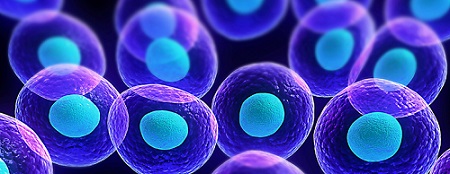
Topic 2: Molecular Biology – SL & HL combined for 21 hours
|
Subtopic
|
Subtopic number
|
Interpretations
|
|
Molecules to metabolism
|
2.1
|
-
Molecular biology explains living processes in terms of the chemical substances involved.
-
Carbon atoms can form four covalent bonds allowing a diversity of stable compounds to exist.
-
Life is based on carbon compounds including carbohydrates, lipids, proteins and nucleic acids.
-
Metabolism is the web of all the enzyme-catalysed reactions in a cell or organism.
-
Anabolism is the synthesis of complex molecules from simpler molecules including the formation of macromolecules from monomers by condensation reactions.
-
Catabolism is the breakdown of complex molecules into simpler molecules including the hydrolysis of macromolecules into monomers.
|
|
Water
|
2.2
|
-
Water molecules are polar and hydrogen bonds form between them.
-
Hydrogen bonding and dipolarity explain the cohesive, adhesive, thermal and solvent properties of water.
-
Substances can be hydrophilic or hydrophobic.
|
|
Carbohydrates and lipids
|
2.3
|
-
Monosaccharide monomers are linked together by condensation reactions to form disaccharides and polysaccharide polymers.
-
Fatty acids can be saturated, monounsaturated or polyunsaturated.
-
Unsaturated fatty acids can be cis or trans isomers.
-
Triglycerides are formed by condensation from three fatty acids and one glycerol.
|
|
Proteins
|
2.4
|
-
Amino acids are linked together by condensation to form polypeptides.
-
There are 20 different amino acids in polypeptides synthesized on ribosomes.
-
Amino acids can be linked together in any sequence giving a huge range of possible polypeptides.
-
The amino acid sequence of polypeptides is coded for by genes.
-
A protein may consist of a single polypeptide or more than one polypeptide linked together.
-
The amino acid sequence determines the three-dimensional conformation of a protein.
-
Living organisms synthesize many different proteins with a wide range of functions.
-
Every individual has a unique proteome.
|
|
Enzymes
|
2.5
|
-
Enzymes have an active site to which specific substrates bind.
-
Enzyme catalysis involves molecular motion and the collision of substrates with the active site.
-
Temperature, pH and substrate concentration affect the rate of activity of enzymes.
-
Enzymes can be denatured.
-
Immobilized enzymes are widely used in industry.
|
|
Structure of DNA and RNA
|
2.6
|
-
The nucleic acids DNA and RNA are polymers of nucleotides.
-
DNA differs from RNA in the number of strands present, the base composition and the type of pentose.
-
DNA is a double helix made of two antiparallel strands of nucleotides linked by hydrogen bonding between complementary base pairs.
|
|
DNA replication, transcription and translation
|
2.7
|
-
The replication of DNA is semi-conservative and depends on complementary base pairing.
-
Helicase unwinds the double helix and separates the two strands by breaking hydrogen bonds.
-
DNA polymerase links nucleotides together to form a new strand, using the pre-existing strand as a template.
-
Transcription is the synthesis of mRNA copied from the DNA base sequences by RNA polymerase.
-
Translation is the synthesis of polypeptides on ribosomes.
-
The amino acid sequence of polypeptides is determined by mRNA according to the genetic code.
-
Codons of three bases on mRNA correspond to one amino acid in a polypeptide.
-
Translation depends on complementary base pairing between codons on mRNA and anticodons on tRNA.
|
|
Cell respiration
|
2.8
|
-
Cell respiration is the controlled release of energy from organic compounds to produce ATP.
-
ATP from cell respiration is immediately available as a source of energy in the cell.
-
Anaerobic cell respiration gives a small yield of ATP from glucose.
-
Aerobic cell respiration requires oxygen and gives a large yield of ATP from glucose.
|
|
Photosynthesis
|
2.9
|
-
Photosynthesis is the production of carbon compounds in cells using light energy.
-
Visible light has a range of wavelengths with violet the shortest wavelength and red the longest.
-
Chlorophyll absorbs red and blue light most effectively and reflects green light more than other colours.
-
Oxygen is produced in photosynthesis from the photolysis of water.
-
Energy is needed to produce carbohydrates and other carbon compounds from carbon dioxide.
-
Temperature, light intensity and carbon dioxide concentration are possible limiting factors on the rate of photosynthesis.
|

Topic 3: Genetics – SL & HL combined for 15 hours
|
Subtopic
|
Subtopic number
|
Interpretations
|
|
Genes
|
3.1
|
-
A gene is a heritable factor that consists of a length of DNA and influences a specific characteristic.
-
A gene occupies a specific position on a chromosome.
-
The various specific forms of a gene are alleles.
-
Alleles differ from each other by one or only a few bases.
-
New alleles are formed by mutation.
-
The genome is the whole of the genetic information of an organism.
-
The entire base sequence of human genes was sequenced in the Human Genome Project.
|
|
Chromosomes
|
3.2
|
-
Prokaryotes have one chromosome consisting of a circular DNA molecule.
-
Some prokaryotes also have plasmids but eukaryotes do not.
-
Eukaryote chromosomes are linear DNA molecules associated with histone proteins.
-
In a eukaryote species there are different chromosomes that carry different genes.
-
Homologous chromosomes carry the same sequence of genes but not necessarily the same alleles of those genes.
-
Diploid nuclei have pairs of homologous chromosomes. Haploid nuclei have one chromosome of each pair.
-
The number of chromosomes is a characteristic feature of members of a species.
-
A karyogram shows the chromosomes of an organism in homologous pairs of decreasing length.
-
Sex is determined by sex chromosomes and autosomes are chromosomes that do not determine sex.
|
|
Meiosis
|
3.3
|
-
One diploid nucleus divides by meiosis to produce four haploid nuclei.
-
The halving of the chromosome number allows a sexual life cycle with fusion of gametes.
-
DNA is replicated before meiosis so that all chromosomes consist of two sister chromatids.
-
The early stages of meiosis involve pairing of homologous chromosomes and crossing over followed by condensation.
-
Orientation of pairs of homologous chromosomes prior to separation is random.
-
Separation of pairs of homologous chromosomes in the first division of meiosis halves the chromosome number.
-
Crossing over and random orientation promotes genetic variation.
-
Fusion of gametes from different parents promotes genetic variation.
|
|
Inheritance
|
3.4
|
-
Mendel discovered the principles of inheritance with experiments in which large numbers of pea plants were crossed.
-
Gametes are haploid so contain only one allele of each gene.
-
The two alleles of each gene separate into different haploid daughter nuclei during meiosis.
-
Fusion of gametes results in diploid zygotes with two alleles of each gene that may be the same allele or different alleles.
-
Dominant alleles mask the effects of recessive alleles but co-dominant alleles have joint effects.
-
Many genetic diseases in humans are due to recessive alleles of autosomal genes, although some genetic diseases are due to dominant or co-dominant alleles.
-
Some genetic diseases are sex-linked. The pattern of inheritance is different with sex-linked genes due to their location on sex chromosomes.
-
Many genetic diseases have been identified in humans but most are very rare.
-
Radiation and mutagenic chemicals increase the mutation rate and can cause genetic diseases and cancer.
|
|
Genetic modification and biotechnology
|
3.5
|
-
Gel electrophoresis is used to separate proteins or fragments of DNA according to size.
-
PCR can be used to amplify small amounts of DNA.
-
DNA profiling involves comparison of DNA.
-
Genetic modification is carried out by gene transfer between species.
-
Clones are groups of genetically identical organisms, derived from a single original parent cell.
-
Many plant species and some animal species have natural methods of cloning.
-
Animals can be cloned at the embryo stage by breaking up the embryo into more than one group of cells.
-
Methods have been developed for cloning adult animals using differentiated cells.
|
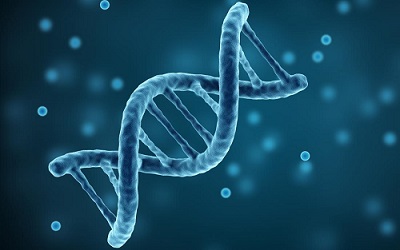
Topic 4: Ecology – SL & HL combined for 12 hours
|
Subtopic
|
Subtopic number
|
Interpretations
|
|
Species, communities and ecosystems
|
4.1
|
-
Species are groups of organisms that can potentially interbreed to produce fertile offspring.
-
Members of a species may be reproductively isolated in separate populations.
-
Species have either an autotrophic or heterotrophic method of nutrition (a few species have both methods).
-
Consumers are heterotrophs that feed on living organisms by ingestion.
-
Detritivores are heterotrophs that obtain organic nutrients from detritus by internal digestion.
-
Saprotrophs are heterotrophs that obtain organic nutrients from dead organisms by external digestion.
-
A community is formed by populations of different species living together and interacting with each other.
-
A community forms an ecosystem by its interactions with the abiotic environment.
-
Autotrophs obtain inorganic nutrients from the abiotic environment.
-
The supply of inorganic nutrients is maintained by nutrient cycling.
-
Ecosystems have the potential to be sustainable over long periods of time.
|
|
Energy flow
|
4.2
|
-
Most ecosystems rely on a supply of energy from sunlight.
-
Light energy is converted to chemical energy in carbon compounds by photosynthesis.
-
Chemical energy in carbon compounds flows through food chains by means of feeding.
-
Energy released from carbon compounds by respiration is used in living organisms and converted to heat.
-
Living organisms cannot convert heat to other forms of energy. -Heat is lost from ecosystems.
-
Energy losses between trophic levels restrict the length of food chains and the biomass of higher trophic levels.
|
|
Carbon cycling
|
4.3
|
-
Autotrophs convert carbon dioxide into carbohydrates and other carbon compounds.
-
In aquatic ecosystems carbon is present as dissolved carbon dioxide and hydrogen carbonate ions.
-
Carbon dioxide diffuses from the atmosphere or water into autotrophs.
-
Carbon dioxide is produced by respiration and diffuses out of organisms into water or the atmosphere.
-
Methane is produced from organic matter in anaerobic conditions by methanogenic archaeans and some diffuses into the atmosphere or accumulates in the ground.
-
Methane is oxidized to carbon dioxide and water in the atmosphere.
-
Peat forms when organic matter is not fully decomposed because of acidic and/or anaerobic conditions in waterlogged soils.
-
Partially decomposed organic matter from past geological eras was converted either into coal or into oil and gas that accumulate in porous rocks.
-
Carbon dioxide is produced by the combustion of biomass and fossilized organic matter.
-
Animals such as reef-building corals and mollusca have hard parts that are composed of calcium carbonate and can become fossilized in limestone.
|
|
Climate change
|
4.4
|
-
Carbon dioxide and water vapour are the most significant greenhouse gases.
-
Other gases including methane and nitrogen oxides have less impact.
-
The impact of a gas depends on its ability to absorb long wave radiation as well as on its concentration in the atmosphere.
-
The warmed Earth emits longer wavelength radiation (heat).
-
Longer wave radiation is absorbed by greenhouse gases that retain the heat in the atmosphere.
-
Global temperatures and climate patterns are influenced by concentrations of greenhouse gases.
-
There is a correlation between rising atmospheric concentrations of carbon dioxide since the start of the industrial revolution 200 years ago and average global temperatures.
-
Recent increases in atmospheric carbon dioxide are largely due to increases in the combustion of fossilized organic matter.
|

Topic 5: Evolution and Biodiversity – SL & HL combined for 12 hours
|
Subtopic
|
Subtopic number
|
Interpretations
|
|
Evidence for evolution
|
5.1
|
-
Evolution occurs when heritable characteristics of a species change.
-
The fossil record provides evidence for evolution.
-
Selective breeding of domesticated animals shows that artificial selection can cause evolution.
-
Evolution of homologous structures by adaptive radiation explains similarities in structure when there are differences in function.
-
Populations of a species can gradually diverge into separate species by evolution.
-
Continuous variation across the geographical range of related populations matches the concept of gradual divergence.
|
|
Natural selection
|
5.2
|
-
Natural selection can only occur if there is variation among members of the same species.
-
Mutation, meiosis and sexual reproduction cause variation between individuals in a species.
-
Adaptations are characteristics that make an individual suited to its environment and way of life.
-
Species tend to produce more offspring than the environment can support.
-
Individuals that are better adapted tend to survive and produce more offspring while the less well adapted tend to die or produce fewer offspring.
-
Individuals that reproduce pass on characteristics to their offspring.
-
Natural selection increases the frequency of characteristics that make individuals better adapted and decreases the frequency of other characteristics leading to changes within the species.
|
|
Classification of biodiversity
|
5.3
|
-
The binomial system of names for species is universal among biologists and has been agreed and developed at a series of congresses.
-
When species are discovered they are given scientific names using the binomial system.
-
Taxonomists classify species using a hierarchy of taxa.
-
All organisms are classified into three domains.
-
The principal taxa for classifying eukaryotes are kingdom, phylum, class, order, family, genus and species.
-
In a natural classification, the genus and accompanying higher taxa consist of all the species that have evolved from one common ancestral species.
-
Taxonomists sometimes reclassify groups of species when new evidence shows that a previous taxon contains species that have evolved from different ancestral species.
-
Natural classifications help in identification of species and allow the prediction of characteristics shared by species within a group.
|
|
Cladistics
|
5.4
|
-
A clade is a group of organisms that have evolved from a common ancestor.
-
Evidence for which species are part of a clade can be obtained from the base sequences of a gene or the corresponding amino acid sequence of a protein.
-
Sequence differences accumulate gradually so there is a positive correlation between the number of differences between two species and the time since they diverged from a common ancestor.
-
Traits can be analogous or homologous.
-
Cladograms are tree diagrams that show the most probable sequence of divergence in clades.
-
Evidence from cladistics has shown that classifications of some groups based on structure did not correspond with the evolutionary origins of a group or species.
|
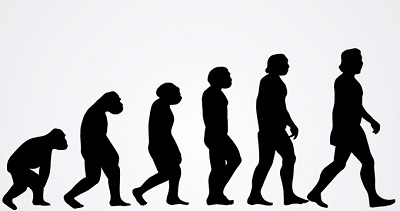
Topic 6: Human Physiology – SL & HL combined for 20 hours
|
Subtopic
|
Subtopic number
|
Interpretations
|
|
Digestion and absorption
|
6.1
|
-
The contraction of circular and longitudinal muscle of the small intestine mixes the food with enzymes and moves it along the gut.
-
The pancreas secretes enzymes into the lumen of the small intestine.
-
Enzymes digest most macromolecules in food into monomers in the small intestine.
-
Villi increase the surface area of epithelium over which absorption is carried out.
-
Villi absorb monomers formed by digestion as well as mineral ions and vitamins.
-
Different methods of membrane transport are required to absorb different nutrients.
|
|
The blood system
|
6.2
|
-
Arteries convey blood at high pressure from the ventricles to the tissues of the body.
-
Arteries have muscle cells and elastic fibres in their walls.
-
The muscle and elastic fibres assist in maintaining blood pressure between pump cycles.
-
Blood flows through tissues in capillaries. Capillaries have permeable walls that allow exchange of materials between cells in the tissue and the blood in the capillary.
-
Veins collect blood at low pressure from the tissues of the body and return it to the atria of the heart.
-
Valves in veins and the heart ensure circulation of blood by preventing backflow.
-
There is a separate circulation for the lungs.
-
The heart beat is initiated by a group of specialized muscle cells in the right atrium called the sinoatrial node.
-
The sinoatrial node acts as a pacemaker.
-
The sinoatrial node sends out an electrical signal that stimulates contraction as it is propagated through the walls of the atria and then the walls of the ventricles.
-
The heart rate can be increased or decreased by impulses brought to the heart through two nerves from the medulla of the brain.
-
Epinephrine increases the heart rate to prepare for vigorous physical activity.
|
|
Defense against infectious disease
|
6.3
|
-
The skin and mucous membranes form a primary defense against pathogens that cause infectious disease.
-
Cuts in the skin are sealed by blood clotting.
-
Clotting factors are released from platelets.
-
The cascade results in the rapid conversion of fibrinogen to fibrin by thrombin.
-
Ingestion of pathogens by phagocytic white blood cells gives non-specific immunity to diseases.
-
Production of antibodies by lymphocytes in response to particular pathogens gives specific immunity.
-
Antibiotics block processes that occur in prokaryotic cells but not in eukaryotic cells.
-
Viruses lack a metabolism and cannot therefore be treated with antibiotics. Some strains of bacteria have evolved with genes that confer resistance to antibiotics and some strains of bacteria have multiple resistance.
|
|
Gas exchange
|
6.4
|
-
Ventilation maintains concentration gradients of oxygen and carbon dioxide between air in alveoli and blood flowing in adjacent capillaries.
-
Type I pneumocytes are extremely thin alveolar cells that are adapted to carry out gas exchange.
-
Type II pneumocytes secrete a solution containing surfactant that creates a moist surface inside the alveoli to prevent the sides of the alveolus adhering to each other by reducing surface tension.
-
Air is carried to the lungs in the trachea and bronchi and then to the alveoli in bronchioles.
-
Muscle contractions cause the pressure changes inside the thorax that force air in and out of the lungs to ventilate them.
-
Different muscles are required for inspiration and expiration because muscles only do work when they contract.
|
|
Neurons and synapses
|
6.5
|
-
Neurons transmit electrical impulses.
-
The myelination of nerve fibres allows for saltatory conduction.
-
Neurons pump sodium and potassium ions across their membranes to generate a resting potential.
-
An action potential consists of depolarization and repolarization of the neuron.
-
Nerve impulses are action potentials propagated along the axons of neurons.
-
Propagation of nerve impulses is the result of local currents that cause each successive part of the axon to reach the threshold potential.
-
Synapses are junctions between neurons and between neurons and receptor or effector cells.
-
When presynaptic neurons are depolarized they release a neurotransmitter into the synapse.
-
A nerve impulse is only initiated if the threshold potential is reached.
|
|
Hormones, homeostasis and reproduction
|
6.6
|
-
Insulin and glucagon are secreted by β and α cells of the pancreas respectively to control blood glucose concentration.
-
Thyroxin is secreted by the thyroid gland to regulate the metabolic rate and help control body temperature.
-
Leptin is secreted by cells in adipose tissue and acts on the hypothalamus of the brain to inhibit appetite.
-
Melatonin is secreted by the pineal gland to control circadian rhythms.
-
A gene on the Y chromosome causes embryonic gonads to develop as testes and secrete testosterone.
-
Testosterone causes pre-natal development of male genitalia and both sperm production and development of male secondary sexual characteristics during puberty.
-
Estrogen and progesterone cause pre-natal development of female reproductive organs and female secondary sexual characteristics during puberty.
-
The menstrual cycle is controlled by negative and positive feedback mechanisms involving ovarian and pituitary hormones.
|
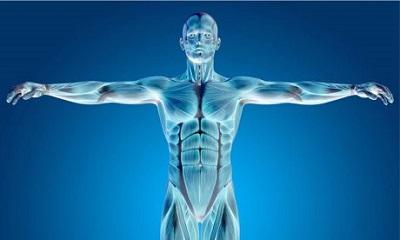
Additional Higher Level Topics
These classes are assigned for Higher Level students only with a total of 60 hours.

Topic 7: Nucleic Acids – HL Only- 9 hours
|
Subtopic
|
Subtopic
number
|
Interpretations
|
|
DNA structure and replication
(HL ONLY)
|
7.1
|
-
Nucleosomes help to supercoil the DNA.
-
DNA structure suggested a mechanism for DNA replication.
-
DNA polymerases can only add nucleotides to the 3’ end of a primer.
-
DNA replication is continuous on the leading strand and discontinuous on the lagging strand.
-
DNA replication is carried out by a complex system of enzymes.
-
Some regions of DNA do not code for proteins but have other important functions.
|
|
Transcription and gene expression
(HL ONLY)
|
7.2
|
-
Transcription occurs in a 5’ to 3’ direction.
-
Nucleosomes help to regulate transcription in eukaryotes.
-
Eukaryotic cells modify mRNA after transcription.
-
Splicing of mRNA increases the number of different proteins an organism can produce.
-
Gene expression is regulated by proteins that bind to specific base sequences in DNA.
-
The environment of a cell and of an organism has an impact on gene expression.
|
|
Translation
(HL ONLY)
|
7.3
|
-
Initiation of translation involves assembly of the components that carry out the process.
-
Synthesis of the polypeptide involves a repeated cycle of events.
-
Disassembly of the components follows termination of translation.
-
Free ribosomes synthesize proteins for use primarily within the cell.
-
Bound ribosomes synthesize proteins primarily for secretion or for use in lysosomes.
-
Translation can occur immediately after transcription in prokaryotes due to the absence of a nuclear membrane.
-
The sequence and number of amino acids in the polypeptide is the primary structure.
-
The secondary structure is the formation of alpha helices and beta pleated sheets stabilized by hydrogen bonding.
-
The tertiary structure is the further folding of the polypeptide stabilized by interactions between R groups.
-
The quaternary structure exists in proteins with more than one polypeptide chain.
|

Topic 8: Metabolism, Cell Respiration, and Photosynthesis – HL Only-14 hours
|
Subtopic
|
Subtopic number
|
Interpretations
|
|
Metabolism
(HL ONLY)
|
8.1
|
-
Metabolic pathways consist of chains and cycles of enzyme-catalysed reactions.
-
Enzymes lower the activation energy of the chemical reactions that they catalyse.
-
Enzyme inhibitors can be competitive or non-competitive.
-
Metabolic pathways can be controlled by end-product inhibition.
|
|
Cell respiration
(HL ONLY)
|
8.2
|
-
Cell respiration involves the oxidation and reduction of electron carriers.
-
Phosphorylation of molecules makes them less stable.
-
In glycolysis, glucose is converted to pyruvate in the cytoplasm.
-
Glycolysis gives a small net gain of ATP without the use of oxygen.
-
In aerobic cell respiration pyruvate is decarboxylated and oxidized, and converted into acetyl compound and attached to coenzyme A to form acetyl coenzyme A in the link reaction.
-
In the Krebs cycle, the oxidation of acetyl groups is coupled to the reduction of hydrogen carriers, liberating carbon dioxide.
-
Energy released by oxidation reactions is carried to the cristae of the mitochondria by reduced NAD and FAD.
-
Transfer of electrons between carriers in the electron transport chain in the membrane of the cristae is coupled to proton pumping.
-
In chemiosmosis protons diffuse through ATP synthase to generate ATP.
-
Oxygen is needed to bind with the free protons to maintain the hydrogen gradient, resulting in the formation of water.
-
The structure of the mitochondrion is adapted to the function it performs.
|
|
Photosynthesis
(HL ONLY)
|
8.3
|
-
Light-dependent reactions take place in the intermembrane space of the thylakoids.
-
Light-independent reactions take place in the stroma.
-
Reduced NADP and ATP are produced in the light-dependent reactions.
-
Absorption of light by photosystems generates excited electrons.
-
Photolysis of water generates electrons for use in the light-dependent reactions.
-
Transfer of excited electrons occurs between carriers in thylakoid membranes.
-
Excited electrons from Photosystem II are used to contribute to generate a proton gradient.
-
ATP synthase in thylakoids generates ATP using the proton gradient.
-
Excited electrons from Photosystem I are used to reduce NADP.
-
In the light-independent reactions a carboxylase catalyses the carboxylation of ribulose bisphosphate.
-
Glycerate 3-phosphate is reduced to triose phosphate using reduced NADP and ATP.
-
Triose phosphate is used to regenerate RuBP and produce carbohydrates.
-
Ribulose bisphosphate is reformed using ATP.
-
The structure of the chloroplast is adapted to its function in photosynthesis.
|
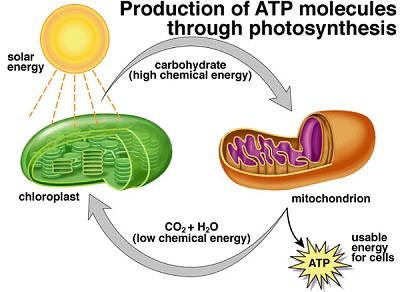
Topic 9: Plant Biology – HL Only-13 hours
|
Subtopic
|
Subtopic
number
|
Interpretations
|
|
Transport in the xylem of plants
(HL ONLY)
|
9.1
|
-
Transpiration is the inevitable consequence of gas exchange in the leaf.
-
Plants transport water from the roots to the leaves to replace losses from transpiration.
-
The cohesive property of water and the structure of the xylem vessels allow transport under tension.
-
The adhesive property of water and evaporation generate tension forces in leaf cell walls.
-
Active uptake of mineral ions in the roots causes absorption of water by osmosis.
|
|
Transport in the phloem of plants
(HL ONLY)
|
9.2
|
-
Plants transport organic compounds from sources to sinks
-
Incompressibility of water allows transport along hydrostatic pressure gradients.
-
Active transport is used to load organic compounds into phloem sieve tubes at the source.
-
High concentrations of solutes in the phloem at the source lead to water uptake by osmosis.
-
Raised hydrostatic pressure causes the contents of the phloem to flow towards sinks.
|
|
Growth in plants
(HL ONLY)
|
9.3
|
-
Undifferentiated cells in the meristems of plants allow indeterminate growth.
-
Mitosis and cell division in the shoot apex provide cells needed for extension of the stem and development of leaves.
-
Plant hormones control growth in the shoot apex.
-
Plant shoots respond to the environment by tropisms.
-
Auxin efflux pumps can set up
|
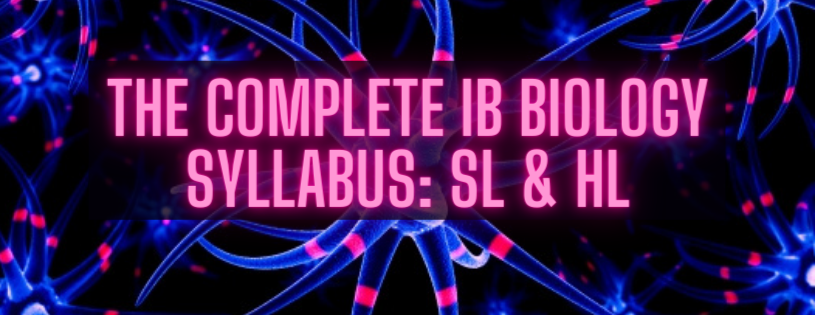

Post a Comment